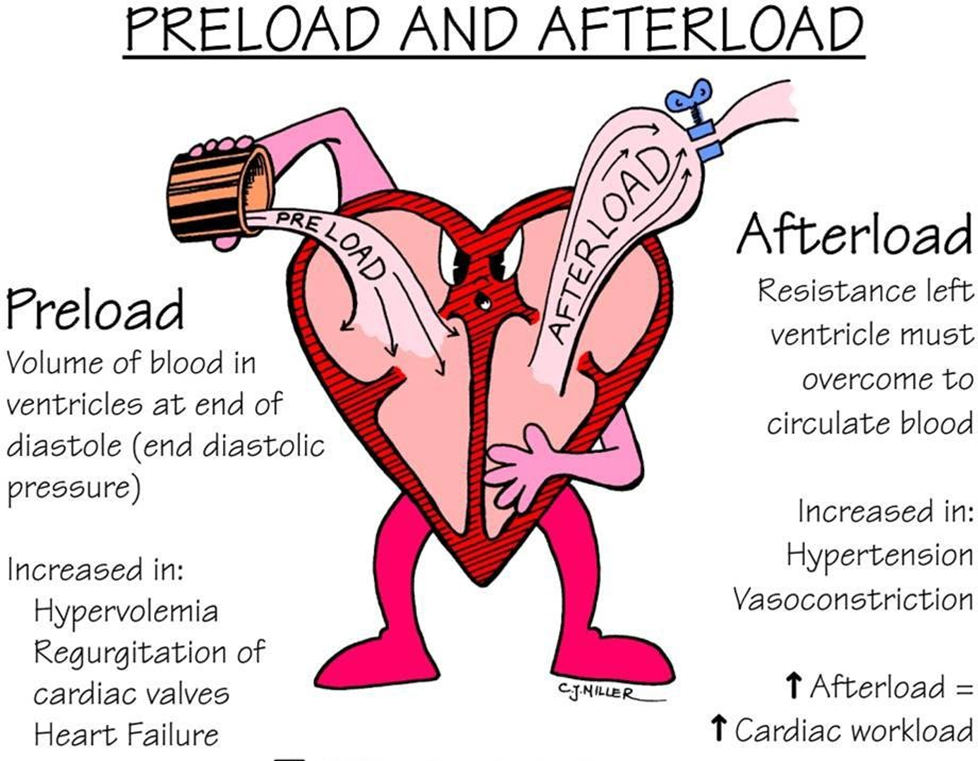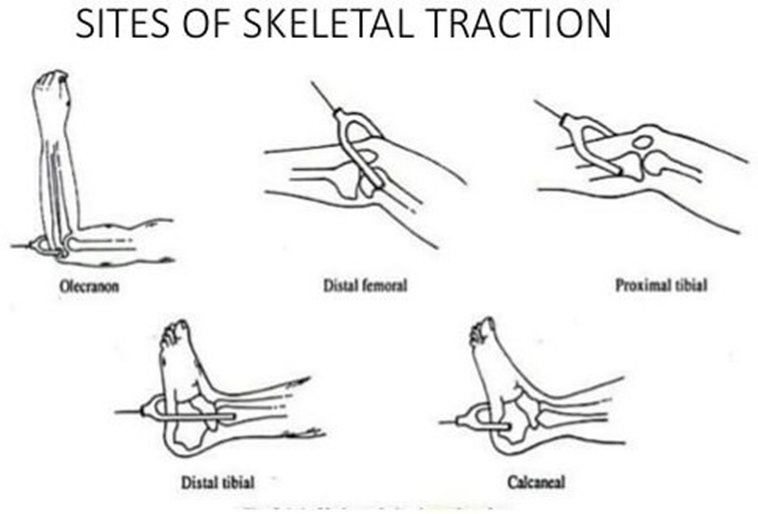Afterload is most accurately described by which of the following?
Fluid volume status.
Atrial contraction (kick).
Resistance to blood flow.
Myocardial compliance.
The Correct Answer is C
Choice A reason: Fluid volume status affects preload, not afterload.
Choice B reason: Atrial contraction contributes to filling of the ventricles, not to afterload.
Choice C reason: Afterload is the resistance left ventricular must overcome to circulate blood, which is accurately described as resistance to blood flow.
Choice D reason: Myocardial compliance refers to the elasticity of the heart muscle, which affects how the heart fills, not the resistance it must overcome to eject blood.

Nursing Test Bank
Naxlex Comprehensive Predictor Exams
Related Questions
Correct Answer is C
Explanation
Choice A reason: Fluid volume status affects preload, not afterload.
Choice B reason: Atrial contraction contributes to filling of the ventricles, not to afterload.
Choice C reason: Afterload is the resistance left ventricular must overcome to circulate blood, which is accurately described as resistance to blood flow.
Choice D reason: Myocardial compliance refers to the elasticity of the heart muscle, which affects how the heart fills, not the resistance it must overcome to eject blood.

Correct Answer is A
Explanation
Choice A reason: Pin site care is essential for a client with skeletal traction to prevent infection and ensure proper healing.
Choice B reason: A five-pound weight lifting restriction is not related to the care of a client with skeletal traction.
Choice C reason: Prone positioning is not typically recommended for clients with skeletal traction as it may interfere with the traction setup.
Choice D reason: Intermitent weights are not a standard intervention for skeletal traction, which requires consistent and controlled application of force.

Whether you are a student looking to ace your exams or a practicing nurse seeking to enhance your expertise , our nursing education contents will empower you with the confidence and competence to make a difference in the lives of patients and become a respected leader in the healthcare field.
Visit Naxlex, invest in your future and unlock endless possibilities with our unparalleled nursing education contents today
Report Wrong Answer on the Current Question
Do you disagree with the answer? If yes, what is your expected answer? Explain.
Kindly be descriptive with the issue you are facing.
